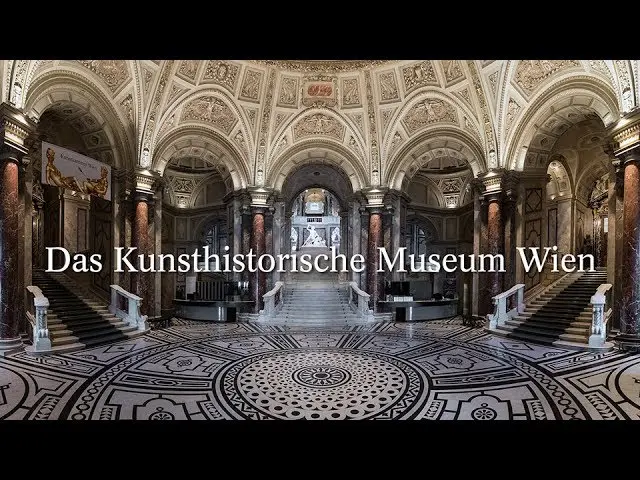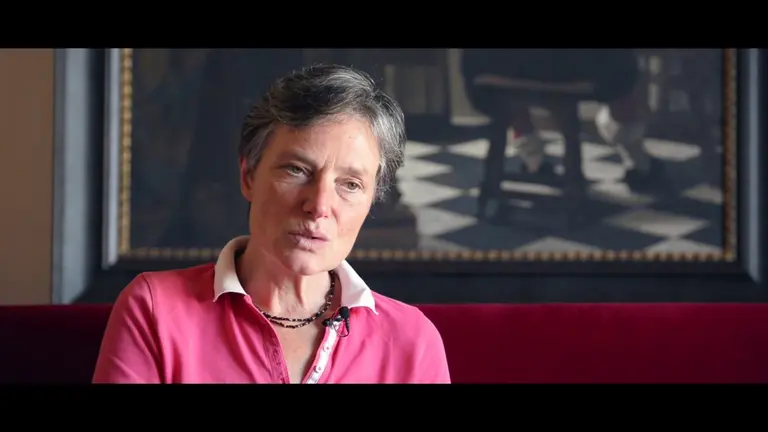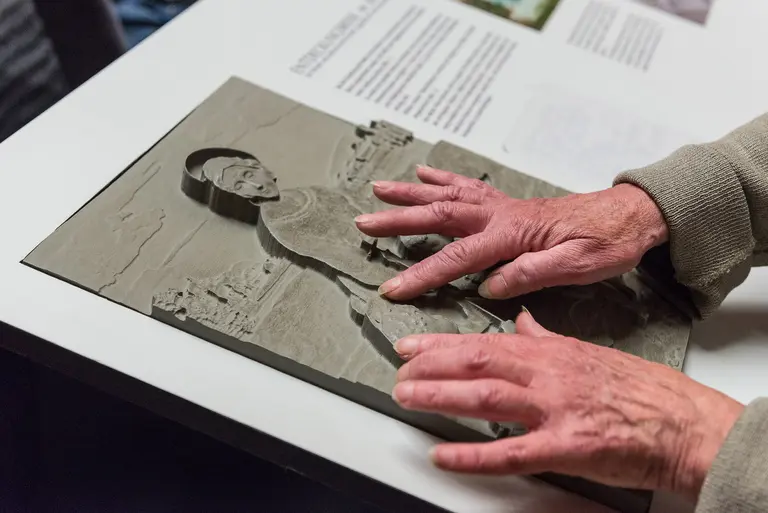The reduced admission price applies for visitors with disabilities and their accompanying person.
We offer special guided tours for people with disabilities on request.
Art touches everybody in the most different ways. Inclusive guided tours enable to experience the art treasures together.
The reduced admission price applies for visitors with disabilities and their accompanying person.
We offer special guided tours for people with disabilities on request.
Barrier-free access
The Kunsthistorisches Museum is accessible for visitors with reduced mobility and visitors with baby carriages via the side entrance (Burgring 5). Our visitor service will accompany you to the elevator and into the building.
All floors of the Kunsthistorisches Museum are accessible via elevators. There are 2 elevators available (door width 99 cm, cabin depth 130 cm, cabin width 150 cm).
Barrier-free toilets
The Kunsthistorisches Museum has 5 barrier-free toilets (lower first floor, upper first floor and 1st floor).
Wheelchairs can be rented (please reserve the day before at guestservice@khm.at)
There are 5 public handicapped parking spaces at the Heldenplatz and 2 public handicapped parking spaces at the side entrance of the Museum, Burgring 5 (Monday to Friday)
Friday is BarriereFREITag. Inclusive guided tours, every Friday at 3 p.m.
Discover the Kunsthistorisches Museum in sign language online.

This audio tour is designed to help people with visual impairments find their way around the building.
Tactile reliefs, tactile transparencies and auditory descriptions – the more senses are stimulated for the perception of visual art, the more vivid and comprehensive it becomes.

Talking about two-dimensional artworks is something of a challenge for our art educators. Explore the masterpieces of the Picture Gallery alone or together with an art educator! Specially-devised material combining tactile images and foils and audio descriptions offer valuable support in this endeavour. The more senses we stimulate for the perception of the visual arts, the more vivid and comprehensive are their effects.
Prices
60-minute guided tour €40
90-minute guided tour €90
This book is designed for people of all eyesight levels, so they can experience the art of the Old Masters with all their senses.
This publication is devised, so that people with or without impaired sight may explore Old Masters with all their senses, both alone and in conversation with others. It presents four masterpieces from the Picture Gallery in combination with stimulating visual, tactile and audio elements.
It comprises total views of the four compositions in colour-enhanced contrasts, transparent tactile foils, details of the paintings in graded outlines and descriptions of the composition in both clearly legible, large black-and-white script and Braille, offering a plethora of gateways to experience these two-dimensional artworks.
In addition, the book includes a CD in an easy-to-handle polybag comprising a classical audio file, and a second CD in Daisy format with additional information (duration c. 80 min.). The Museum Book is the only one of its kind in Austria.
The Kunsthistorisches Museum offers blind and visually impaired people a completely new view of paintings.
The Kunsthistorisches Museum offers blind and visually-impaired visitors a new way to explore paintings. Until now, they could only experience the subject through an intensive dialogue with a companion. But specialized new technologies have transposed paintings into tactile reliefs, allowing visitors to actually feel the basic elements of the painted composition. These novel impressions are augmented by oral explanations provided by one of our educators. In addition, we offer a brochure in Braille that comprises both a description of the artwork written especially for the blind and the visually-impaired, and additional information on the respective artwork. Various objects connected in some way with the painting supply additional tactile stimulation, and further enhance these new impressions.
The project was generously supported by the Bundesministerium für Unterricht, Kunst und Kultur as part of its education initiative “Kulturvermittlung mit Schulen in Bundesmuseen 2010”; chaperoned by KulturKontakt Austria; and realized in connection with VRVis Zentrum für Virtual Reality und Visualisierung Forschungs GmbH.

The Kunsthistorisches Museum is one of the first museums to receive the ‘COME-IN!’ award.
COME-IN! is an award for museums that are committed to the comprehensive accessibility of their services and their premises. The aim of COME-IN! is to improve access to Europe's cultural heritage for all people.
We look forward to your visit!